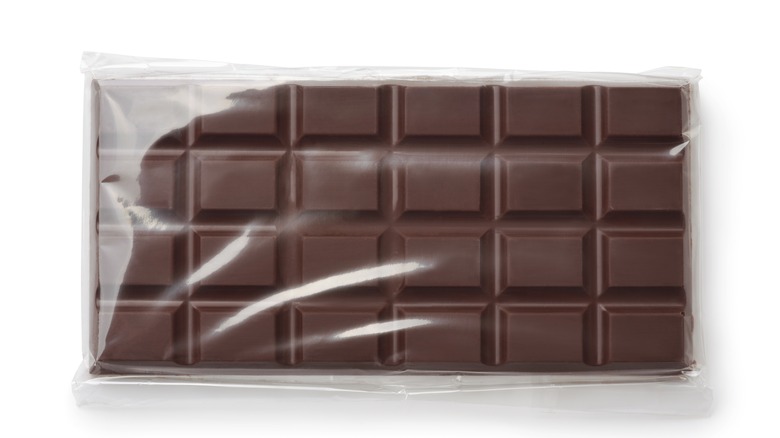The Step You Should Always Take Before Freezing Chocolate
It's hard to fathom, but it can happen — having more chocolate than you can eat. This can often occur around holidays when sweet treats are involved. Don't worry about the chocolate getting old and wasted; there is a way to freeze the chocolate so it doesn't go bad. There is no hard and fast timeline for when chocolate goes bad, per The Pioneer Woman. Before biting into chocolate of an unknown age, test it to see if it smells, tastes, and looks normal. If it hits all three marks, then go ahead and eat it, explains The Pioneer Woman. You can also check the chocolate's "best by" date in order to eat it when it still tastes the best. Another rule of thumb is the more dairy a piece of chocolate contains, the shorter its short life.
If the chocolate has developed white splotches, which could be a fat or sugar bloom, it's safe to eat but just might not taste as good, per MyRecipes. Fat blooms occur when the temperature changes around the chocolate, and the milk fats or butter in the chocolate crystallizes. When sugar crystallizes in chocolate, sugar blooms are created. According to MyRecipes, the best way to store your chocolate to prevent the blooms from occurring and keep your chocolate tasting good is to freeze it, but there is a trick to doing it right.
A slow freeze
Freezing chocolate can be done, but it's best if done slowly. According to Taste of Home, before you even think about storing chocolate, it needs to be prepped properly. First, make sure it is wrapped tightly. Then, according to Taste of Home, the chocolate should be kept in either an airtight container or a freezer bag.
To make sure chocolate freezes properly, it should first be kept in the refrigerator for up to 24 hours before it's moved into the freezer for long-term storage. When the chocolate is needed, simply do the same process in reverse, advises Taste of Home. Remove the chocolate from the freezer and place it in the fridge to thaw and then take it out and allow it to warm up to room temperature. If you skip this step, and the chocolate could develop sugar blooms, per Nestlé. Another reason that warming the chocolate should be done gradually is because chocolate becomes brittle and hard when it is cold.
With a little care, that extra chocolate can be enjoyed later on.

